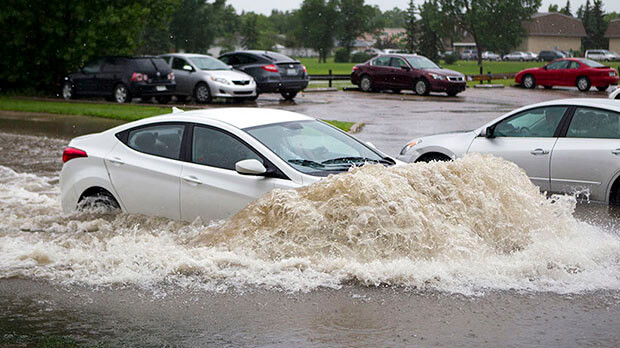How not to purchase a flood damaged car

Flood damage affected cars
Ask anyone in the trade about “car flood damage cars and most likely they will say its almost impossible to repair them to a decent standard. Even car insurance companies avoid the Hassle of spending money on them in an effort to repair them, and so they simply write them off as a flood-damaged car.
Modern cars are complex and any flood water damage is very destructive to all the modern cars systems, so repairing them is usually not very simple at all.
Flood damage can corrode sheet metal and frames. It can short circuit the electrical systems affecting steering, airbags and lights etc. Flood water can also damage the brake disks and even allow dangerous mold and bacteria to grow in a vehicle. These problems are not always immediately apparent and can take weeks or even months to become obvious.
Damage to Electrical Systems:
Many vehicle manufacturers install electronic computers in the flood boards and under vehicle seats. Water damage to the electrical components of your vehicle may cause systems to fails. Often times water damage to these systems won’t be immediately apparent and issues will arise as the water causes corrosion over time.
Engine Intake:
Water getting into your vehicles intake system is one of the worst possible scenarios. Water reaching your vehicles’ intake can get into your vehicles cylinders where the pistons will try to compress it. This can cause the piston rods to bend, or the engine block to crack. Both of which are detrimental to your engine.
Brakes:
If you have driven through deep water, we advise you to have your brake system checked. Water can cause damage to hot brake rotors, causing warping, which will result in a rough stopping vehicle. Water can also seep into your brake lines and cause braking system failure.
You can minimize your chances of buying a flood-damaged vehicle by following some of these simple steps.
- Check every electrical system you can. You certainly wouldn't trigger an airbag deployment system just to test it as it is a bit excessive, but there are plenty of other electrical systems that you can test. These include the electric windows, door locks, interior and exterior lights, and infotainment screens if any. You need to ask the question, are they all working as they should? If not, you should find out why?
- Check for rust. May seem obvious but flood damage can occur even if a vehicle isn't completely submerged under water. For example, when checking the engine bay look for any visible water-line. If you notice that the vehicle below a visible line is the car was flooded. is visibly rustier, that might be the high water mark from a flood. It may also be a good idea to look at the rods that connect to fuel and brake pedals. These don't rust under normal circumstances, so if they appear corroded, that could very well indicate flood damage.
- If you pop off an inside door panel, you can check for muck buildup or a moldy smell inside the door. An unscrupulous seller could even replace the carpeting or have a damaged car seats thoroughly cleaned, but they're less likely to address the insides of doors.
- Finally, use common sense. The Latin phrase caveat emptor (let the buyer beware) is always good to keep in mind. Remember, if a deal seems too good to be true, it probably is.
Author

Justin Kavanagh
Justin Kavanagh is a recognised leader
in automotive intelligence and vehicle
data supply to the entire motor industry.
He has almost 20 years experience in
building systems from the ground up.
As the Managing Director of Vehicle
Management System, he understands the
need and importance of trustworthy and
reliable vehicle history and advice to
both the trade and the public.
Follow me on LinkedIn